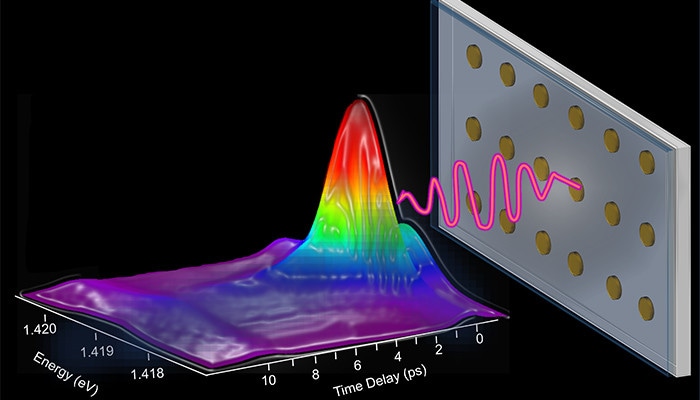May 3 2018

Innovative research has revealed that when an organic dye is combined with metallic nanostructures, the resulting structure can display ultrafast lasing with rapid short laser pulses.
“We wanted to find out how fast we can turn our laser device on and off. Generating laser pulses quickly can be very useful in information processing and can improve the response of some optoelectronic devices,” explained Konstantinos Daskalakis, a postdoctoral researcher at Aalto University.
In the experiments, samples made of gold nanoparticles were deposited on glass and immersed in an organic, light-emitting dye.
The nanoparticles in the sample are closely packed together in a square array. High field strengths are produced by electric fields which are localized around the particles, these fields have the result of accelerating the molecular dynamics of the organic dye.
The conducting gold particles and the electromagnetic fields not only interact with each other but also interact with the organic dye to produce a directional laser pulse that is ultrafast, with a duration of one-trillionth of a second.
Producing a laser of this type is important for all-optical sensing and switching and will enhance the speed of optical telecommunications and the performance of devices, such as transistors and cameras, which use light to process information.
Generally, tiny nanolasers cannot generate strongly directional beams, however the ordered nature of the array used in the experiment meant directionallity was achieved. When nanoparticles are arranged in an array, the directionality is greatly enhanced. Although such lasers have already been developed in many laboratories across the globe, their ability to produce ultrafast pulses has not been verified prior to the experiments performed at Aalto University.
Since the pulses have tremendous speed, measuring their properties is highly challenging.
“The key achievement here is that we have succeeded in experimentally demonstrating that the laser pulses are indeed ultrafast. The lasing occurs in optical modes that are hybrids of light and the motion of electrons in metal. These modes are called surface lattice resonances,” explained Academy Professor Päivi Törmä.
First, the metallic nanoparticles squeeze the laser light into sub-wavelength dimensions; subsequently, it escapes as a picosecond-fast, concentrated laser pulse from the surface lattice resonance modes.
“These kinds of metal nanoparticle array lasers are excellent for generating pulsed laser radiation with a high modulation speed,” stated doctoral student Aaro Väkeväinen.
The speed of the pulse produced by the nanoparticle-array laser is so high that traditional electronic cameras cannot capture its dynamics. Therefore, the team used another laser as a “camera” to take very fast images of the small laser. This technique is known as pump-probe spectroscopy.